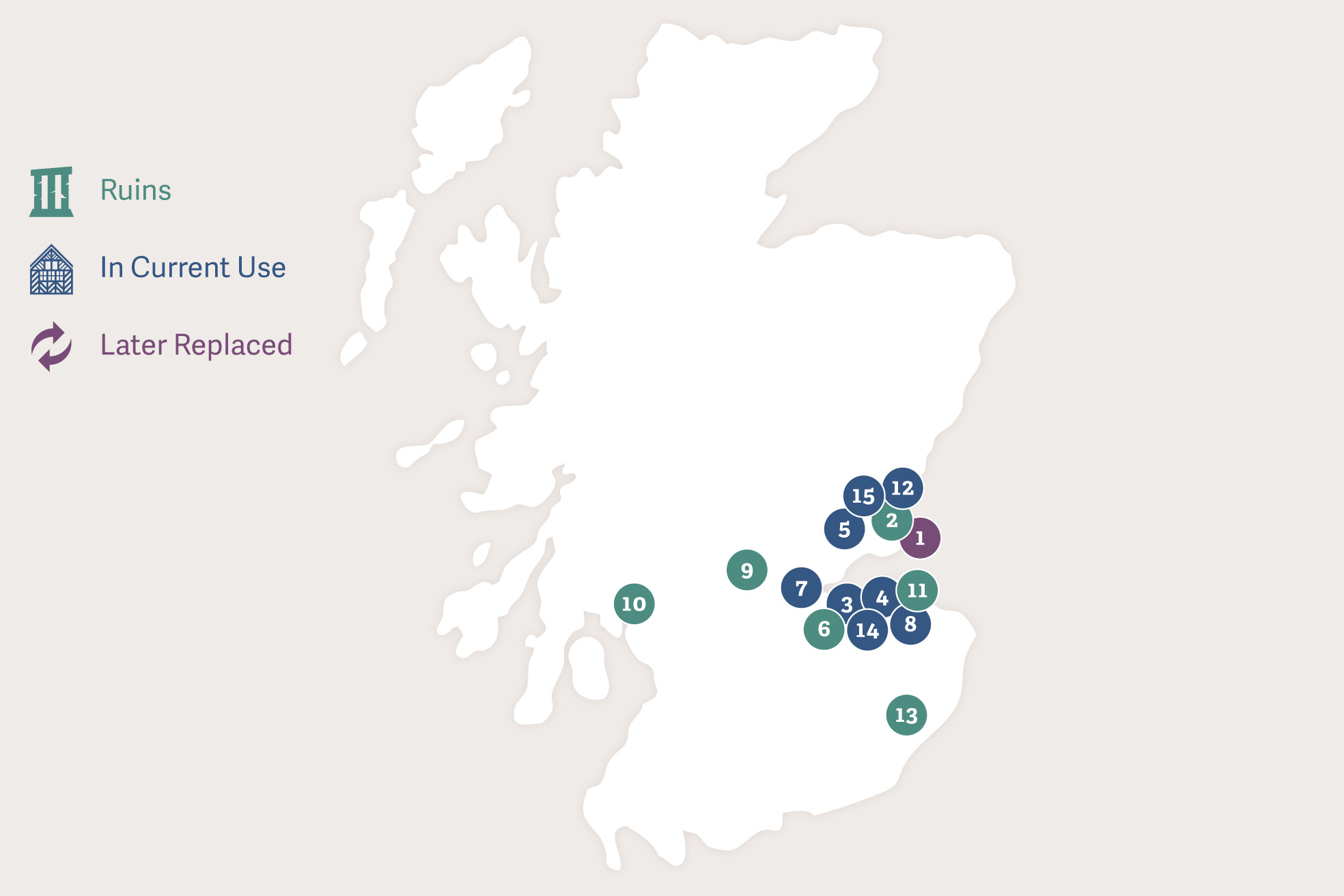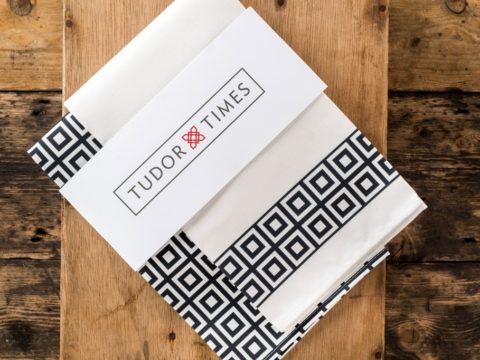Marie of Guise: French Chateaux & Scottish Castles
Marie spent her youth in France, before arriving in Scotland aged about twenty-three. She travelled extensively in Lowland Scotland to carry out her functions, first as Queen Consort, then as Regent.
The numbers against the places correspond to those on the map here and at the end of this article.
Marie of Guise was born in Bar (now Bar-le-Duc) a town now in the north-east of France, in the department of Meuse but at the time of Marie’s birth in 1515 in the Imperial Duchy of Lorraine. Her early childhood was spent in the Guise chateau at Joinville, which her father extended after Marie’s first marriage, with the construction of the recently restored Chateau du Grand Jardin.
Marie then spent some years at the convent of the Poor Clares in Pont-a-Mousson, before returning to Bar to the household of her uncle, Antoine, Duke of Lorraine, and his wife, Renee of Bourbon-Montpensier in about 1529.
In 1534, she joined the French Court and would have spent time at the Louvre, and in Francois I’s superb chateaux, including Fontainebleu, Amboise and Chambord.
After her first marriage, which took place at the Louvre, Marie moved to her husband’s lands which were centred around Amiens, where her first son was born. Her favourite home seems to have been the Chateau of Chateaudun, at the northern end of the Loire, which had been largely rebuilt by her husband’s father. Marie was again in Paris, at Notre-Dame on 1st January 1537, for the marriage of the Princess Madeleine to James V of Scotland, but returned to Chateaudun to await the birth of her second child.
Marie was at Chateaudun when she heard of the death of her husband, Louis, Duke of Longueville, at Rouen and it was there that she married James V of Scotland by proxy on 29th May 1538.
Marie was more fortunate than many royal brides in that she had at least met her husband previously, and also that he was only three years older than herself, and considered to be good looking. Nevertheless, it must have been with some trepidation that she embarked from Normandy to take the rough passage through the Channel and the North Sea to Scotland. Her passage was quick and she sailed into the Firth of Forth, arriving on 10th June 1538 at Balcomie Castle, property of the Learmonth family. (1) The current building is a later replacement, dating from the second half of the sixteenth century.
On the 20th of the month, Marie and James were married at the cathedral of St Andrew’s (2), the seat of the Archbishop of St Andrew’s, primate of Scotland. Ancient St Andrew’s, too, is gone, with only the ruins of the once vast cathedral visible.
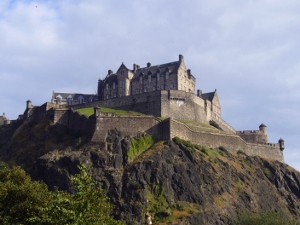
After some months, Marie and James arrived in Edinburgh. When in the capital they divided their time between the ancient fortress of Edinburgh Castle (3) which still towers over the city from the rocky eminence of The Mound, and the new palace at Holyrood (4).
Holyrood was largely created by James V and his predecessor, James IV. It was in the renaissance style, heavily influenced by French chateaux and likely to have been far more comfortable for the new Queen than the mediaeval castle. Holyrood Palace is still the official residence of HM The Queen when she is in Scotland, and is well worth a visit. The Castle is also open to tourists and displays the Honours of Scotland, as the Crown Jewels of the country are called. The crown on display is the one remodelled for James V that he wore for the coronation of Marie on 22nd February 1539.
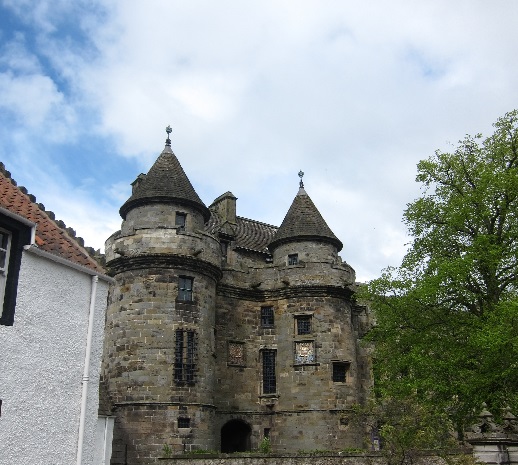
Marie’s dower included several palaces and castles. One of her personal favourites was Falkland Palace (5). Originally a hunting box, Falkland was turned into a renaissance palace by James IV and James V. with all of the most modern improvements seen in France, including a court for real tennis. During her married life, significant building works were undertaken in which Marie took a keen interest, apparently climbing a ladder to inspect works before authorising payment.
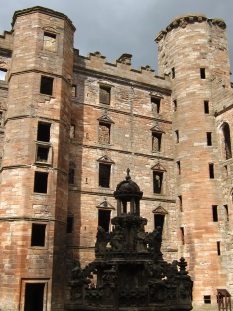
Another of Marie’s dower castles was Linlithgow (6) and it was here that she gave birth to her third child, the only one to survive. Apparently, when asked what she thought about Linlithgow, she said she ‘had never seen a more princely palace.’
Stirling Castle (7), situated in the heart of Lowland Scotland, was probably the place where Marie spent most time. She retreated there with her daughter, the young Mary, Queen of Scots after the death of James V, when it was feared that the little Queen would be kidnapped by the English who wanted to arrange a marriage between her and Edward, son of Henry VIII. James V had begun a new palace block within the castle walls, in the renaissance style. This has now been restored to look as it did during Marie’s regency. The colours are surprisingly bright!
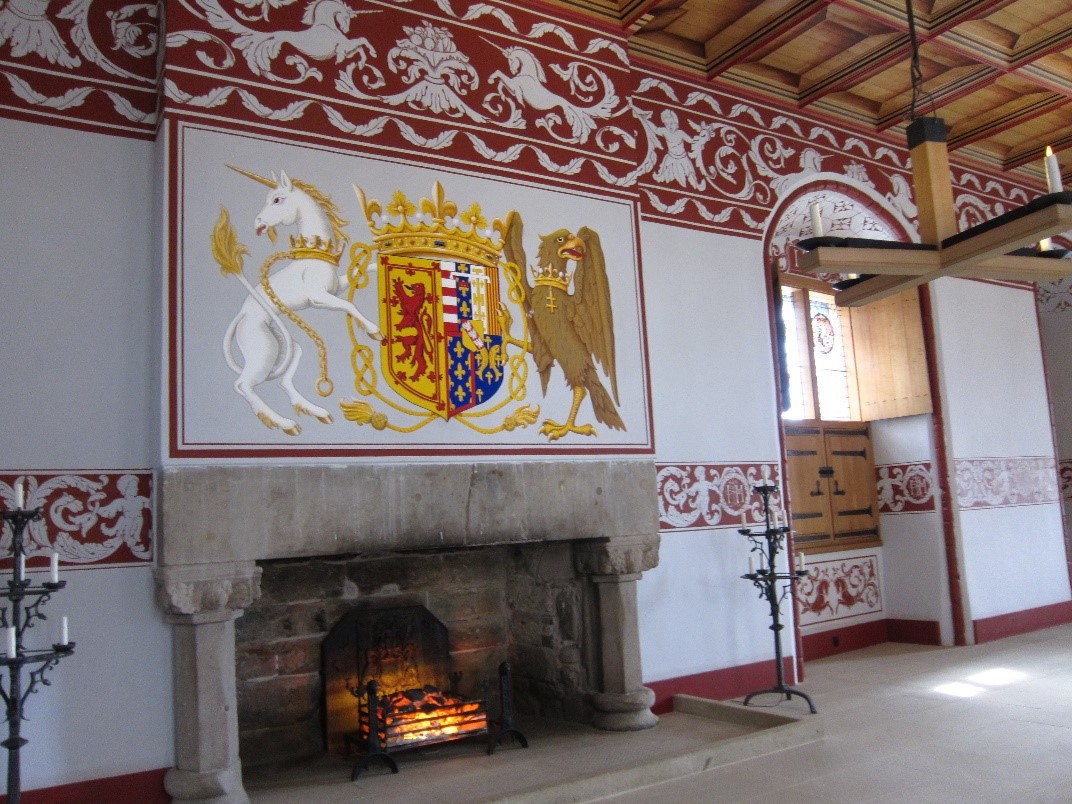
The Scottish Estates, having declined the offer of a match with Prince Edward of England, agreed the Treaty of Haddington. This was signed in Haddington Priory (8) on 7th July 1548, with Marie in attendance.
There were still fears for the young Queen, so Marie took her further inland from Stirling, to Inchmahome Priory (9) and then to Dumbarton Castle (10), the oldest and probably the most impregnable fortress in the whole of Scotland. There is little left of the sixteenth century structure, most of the extant building dating from some 200 years later.
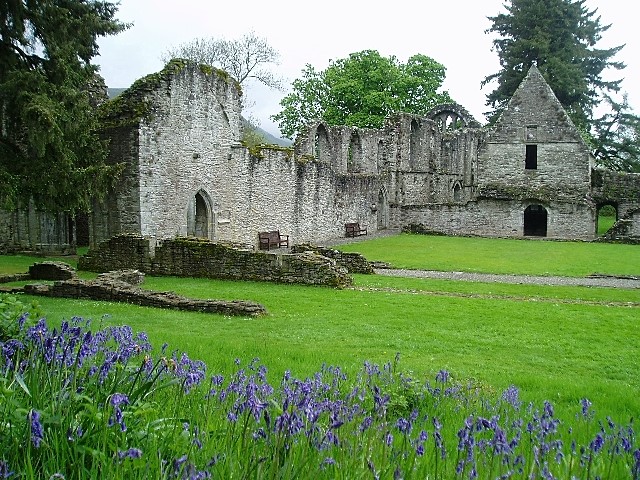
As part of the Treaty of Haddington, Dunbar Castle (11) was handed over to the French. Marie was later forced to retreat there when the Lords of the Congregation rose against her in the summer of 1559.
During the War of the Rough Wooing (1543 – 1551) the English built or fortified a number of strongholds, including at Broughty Castle (12). Marie and the Scottish nobles held a conference at Stirling at which they agreed that French troops would be requested to recapture Broughty. Marie watched the successful attack from the opposite bank of the River Tay, following which the English garrison surrendered the castle on 12th February 1550.
One of the duties of a Scottish monarch that Marie fulfilled as Regent for her daughter was the personal dispensing of justice. She and her court would travel to towns outside the capital where “justices ayre” were held. Jedburgh (13), a border town which had suffered badly during the Wars of the Rough Wooing, was one of the places where Marie carried out this function.
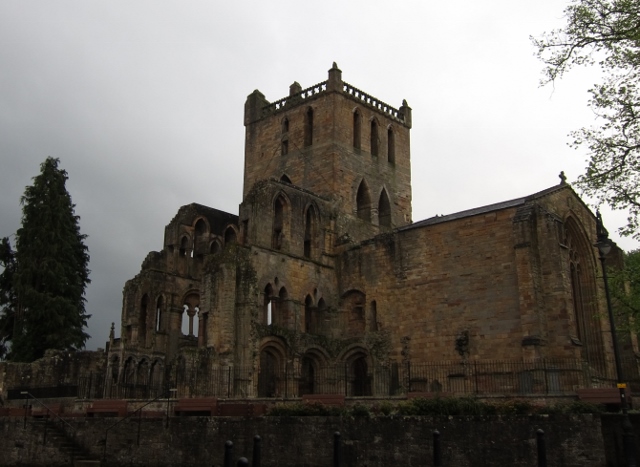
In 1559, Marie came into conflict with the increasingly Protestant nobility. Religious tensions in Perth (15) spilled over into violence, and Marie did not have sufficient troops to impose order. Her opponents, the Lords of the Congregation, were increasingly disaffected by the French domination of Marie’s government. The rebels took control of Edinburgh, but Marie had enough support for them to have to withdraw. A truce was agreed in the Articles of Leith (14), signed on 25th August 1559, which granted freedom to worship in private, according to conscience.
Marie’s health was deteriorating. She took to her bed in Edinburgh Castle in early June, and died there on 11th June. Her body lay in St Margaret’s Chapel, within the Castle precincts before being shipped back to France in 1561, to be buried in the Convent of St Pierre-les-Dames, in Rheims, where her sister, Renee, was abbess.
This article is part of a Profile on Marie of Guise available for Kindle, for purchase from Amazon.
Marie of Guise
Family Tree
The map below shows the location of the places associated with Marie of Guise discussed in this article.
